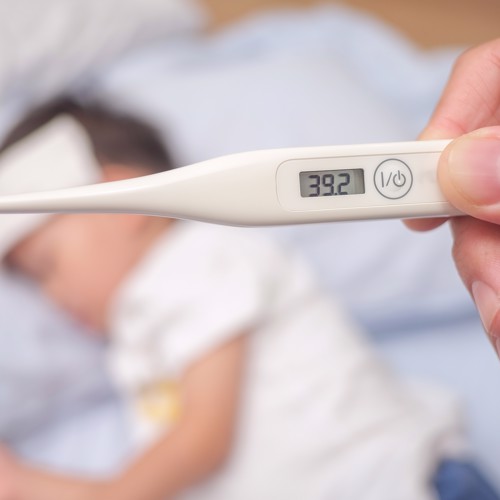Summer Fever - unseasonal RTIs in Children
NO
PHARMACEUTICAL INFLUENCE
Summer Fever - unseasonal RTIs in Children

I was duty doc yesterday and like all GPs recently I spoke to a number of parents worried about their small children with fever, cough and respiratory symptoms. Strange given that we are in high summer, but one of the most striking things of last winter was that the combination of lockdown, social distancing and mask wearing led to a massive reduction in common viral infections in children. As has been widely reported BMJ 2021;373:n1639 we are now seeing a surge in cases of febrile children with respiratory viruses and similar unseasonal outbreaks have been reported in children worldwide.
So, it is becoming clear that following on from the covid related delays to cancer diagnoses, routine referrals and the increase in mental health problems we are now seeing yet another downstream complication of the pandemic. A generation of small children has not been exposed to viruses such as RSV that normally circulate in the community, which means that with sudden mixing again in children lacking naturally acquired immunity these viruses are now spreading rapidly.
For the vast majority, these cases will be mild, self-limiting illness due to rhinovirus or parainfluenza, but it has been predicted that there will be a large surge of cases of RSV in the autumn and winter this year causing bronchiolitis and penumonitis. This is already happening in many parts of the country, and where I work in Oxford they have reported a 50% to 100% increase in cases of viral pneumonitis requiring hospital admissions.
Clearly, we need to be vigilant in our assessment of these ill children. However, as well as seeing children not previously exposed to RSV, we are also seeing new parents not previously exposed to the stress of having febrile kids. This is creating a lot of anxiety. Yesterday I spoke to the worried Mum of a 2 year old who had had a fever for one day. She had not given paracetamol, indeed did not have any in the house and she told me that her child had never had a fever before. For a two-year-old, this is extraordinary. When I look back to when my kids were small, they seemed to be permanently hot, snotty and coughing. It was only a combination of wine (for us) and calpol (for them) that got us through those years. I fully understand that if you have never seen your child hot and unwell, this is scary and emergency departments are reporting that they are becoming overwhelmed with cases of children presenting with mild respiratory infections.
So, how should we respond? It seems to me we have two key roles. Firstly, in the initial assessment of the ill child and to be confident in our clinical method for when we give remote advice, when we bring them in for assessment or when we send them in to hospital. Secondly, for the reassurance and education of the parents of children with fever and mild illness with appropriate safety netting.
To help us with both of these things, the Royal College of Paediatrics and Child Health has produced some great resources via recent national guidance for the management of children with bronchiolitis and LRTI during the COVID-19 era RCPCH Guidance 2020. These include useful ‘traffic light’ clinical support tools and also great safety netting advice to give to parents.
RCPCH Safety netting information for parents, coughs and colds < 1 year of age
RCPCH Safety netting information for parents, coughs and colds > 1 year of age
RCPCH Safety netting information for parents, bronchiolitis in babies < 1 year of age
To help you to prepare for the expected autumn and winter surge of RSV and related illness in children, we will take you through the key parts of this guidance (including the role of paediatric oxygen saturation monitors in primary care) and other recent relevant evidence and guidelines in the Autumn series of Hot Topics from September.
Simon Curtis
Dr Simon Curtis
15th July 2021
Join us at one of our upcoming courses or live webinars

Recent NB Blogs
Need an immediate update? – all our courses are available on demand
Did you find this useful?
You can quickly add CPD to your account by writing a reflective note about the Summer Fever - unseasonal RTIs in Children post you've read.
Log in to your NB Dashboard and use the 'Add Reflective Note' button at the bottom of a blog entry to add your note.

